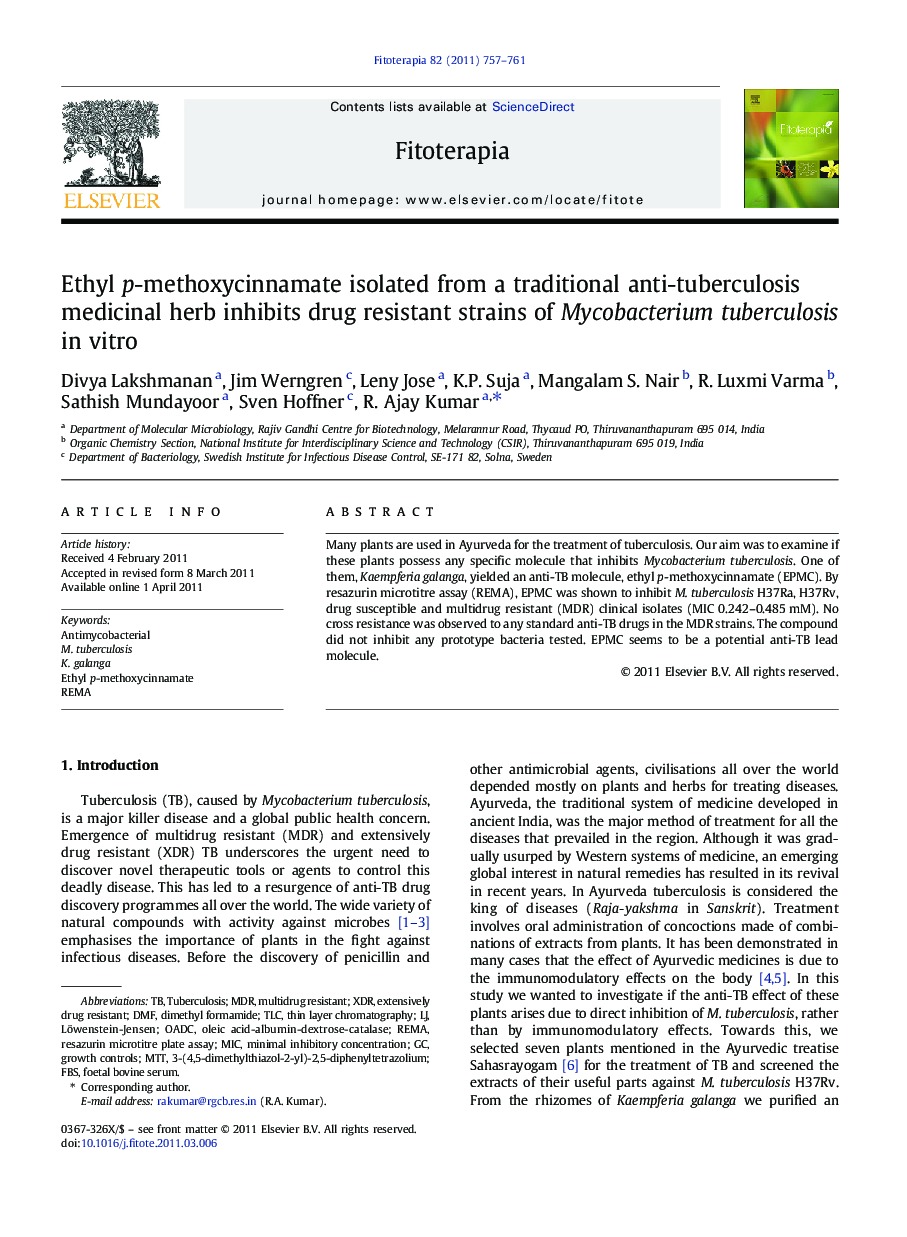| Article ID | Journal | Published Year | Pages | File Type |
|---|---|---|---|---|
| 2538993 | Fitoterapia | 2011 | 5 Pages |
Many plants are used in Ayurveda for the treatment of tuberculosis. Our aim was to examine if these plants possess any specific molecule that inhibits Mycobacterium tuberculosis. One of them, Kaempferia galanga, yielded an anti-TB molecule, ethyl p-methoxycinnamate (EPMC). By resazurin microtitre assay (REMA), EPMC was shown to inhibit M. tuberculosis H37Ra, H37Rv, drug susceptible and multidrug resistant (MDR) clinical isolates (MIC 0.242–0.485 mM). No cross resistance was observed to any standard anti-TB drugs in the MDR strains. The compound did not inhibit any prototype bacteria tested. EPMC seems to be a potential anti-TB lead molecule.
Graphical abstractThe compound ethyl p-methoxycinnamate (EPMC) isolated from the traditional medicinal herb Kaempferia galanga L. was shown to be active against sensitive and drug resistant strains of Mycobacterium tuberculosis.Figure optionsDownload full-size imageDownload as PowerPoint slide
